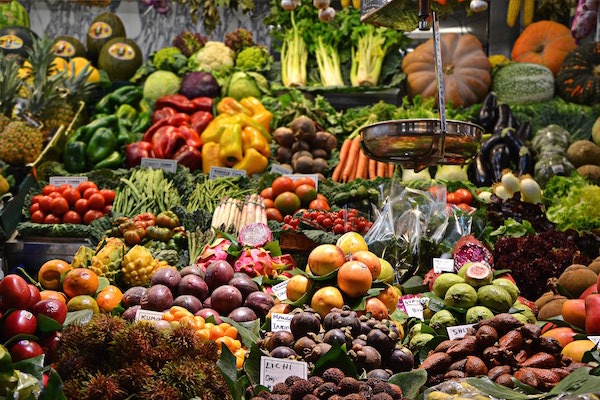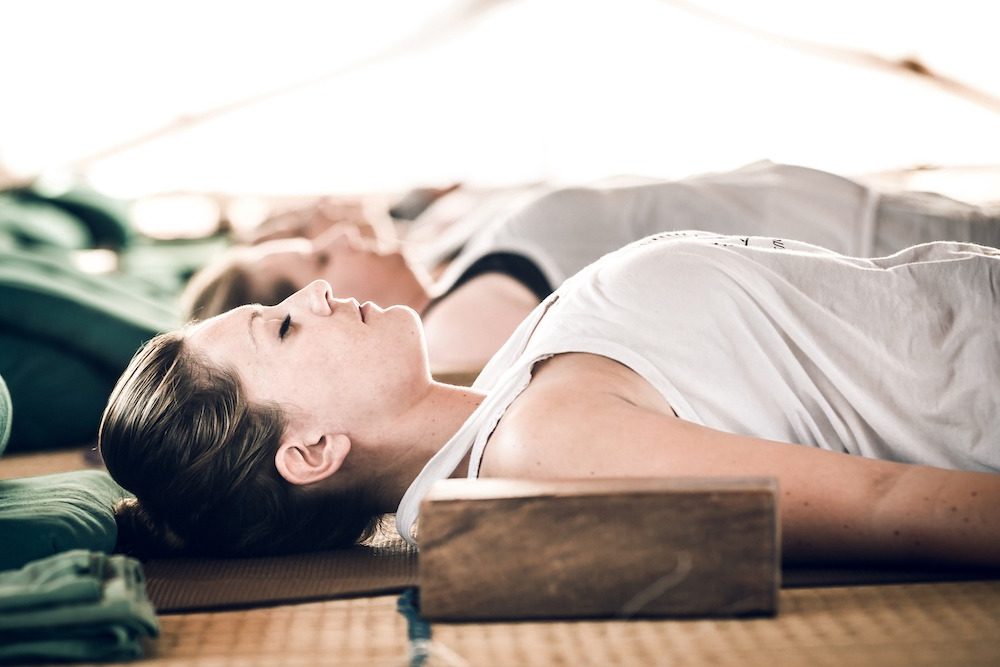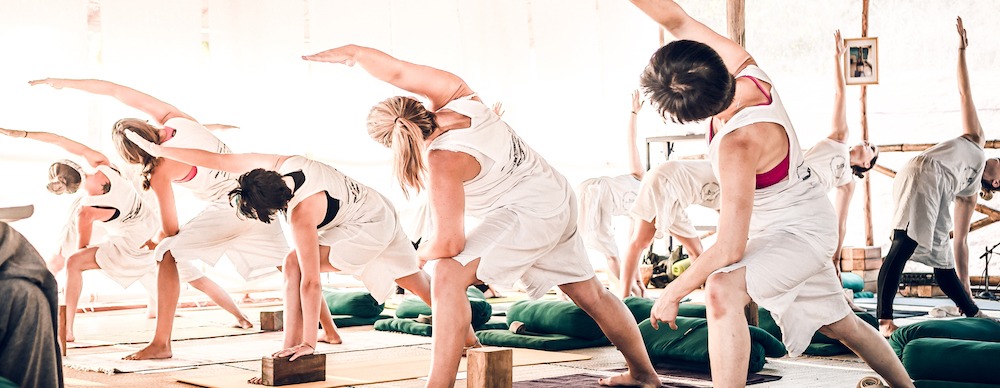
Ayurveda gives a strong foundation to our yogic well-being and through the lens of the three doshas gives us a map to navigate how we perceive and deal with stress in our lives.
According to a 2018 study conducted by the Mental Health Foundation in the UK – the largest study to date on stress levels – it was found that “74% of people have felt so stressed they have been overwhelmed or unable to cope” – and this is mirrored in other polls across Europe and within the US. It is also across all ages – teenagers and young adults through to those over 70.
As a practitioner of yoga and student of both philosophy and Ayurveda – I am looking increasingly at how these sister sciences can help us dissolve stress and recognize common triggers and habitual reactions.
Stress is a reaction to our continually changing environment and perceived pressures and expectations that we place upon ourselves – it is a wear-and-tear of our mind and body experiences as we attempt to cope with life as it unfolds.
Through the lens of our ayurvedic constitution – each dosha responds to stress differently. If we can work out simple ways to pacify our doshas, we can potentially reduce our habitual stress response.
Read More: Build Resilience and Dissolve Stress
The Three Doshas in a Nutshell
Vata (Air element) governs movement. It is the most dominant of the doshas and also governs the nervous system. A typical Vata person moves fast, talks fast and is creative and dynamic in short bursts.
If a Vata person is stressed, they are more likely to be anxious, restless and suffer nervous system problems, insomnia, migraine, neural pain and burn-out.
Pitta (Fire element) governs our digestion, hunger and enzymes – the fuel and fire as well as the hormonal network of the body. Pittas have a sense of clarity, purpose and leadership, but might often put too much expectation on themselves to achieve and succeed.
If a Pitta person is stressed, they tend to be irritable, frustrated and angry leading again to anxiety, but also indigestion and acidity.
Kapha is the most stable of the doshas governing the physical structure and stability of the body. In a stressful situation, Kaphas tend to be calm and collected. But if there is long-term stress, Kaphas can tend to withdraw and isolate themselves, suffering from depression.
Our mind-body dynamic can be a combination of two or even all three doshas. Most people are a combination: Vata/ Pitta or Pitta/ Vata – depending on which one is more dominant; Pitta/ Kapha or Kapha/Pitta and least likely Vata/Kapha or Kapha/ Vata; while some are a combination of all three.
Understanding our dosha dynamic helps us navigate our day-to-day lives. What are the best foods to nourish our body? Which type of exercise or yoga do we best respond to? What kind of teacher will guide us? Is our job satisfying our dosha – our creativity or our need for stability and routine?
And, how can I best alleviate the symptoms of stress for my dosha?
Ayurvedic philosophy is a process of self-enquiry. Being brave enough to answer the questions and see ourselves clearly. Often, we know the foods that cause indigestion or sleeplessness and yet we ignore what our body is telling us. How can we use foods to alleviate symptoms of stress rather than exacerbate them? Is our asana practice nourishing or at a deeper level contributing to restlessness?
A traditional ayurvedic doctor is as likely to prescribe meditation and yoga asana as much as herbal medicine.
For one dosha, a dynamic yoga practice might clear the mind and mental fog helping us deal with a stressful day and give us a restful night’s sleep; while for another body type, a dynamic practice is going to add to the wear-and-tear, over-stimulate and create a fitful night’s sleep.
Similarly for one dosha, a hot milky drink before bed is going to pacify, while for another it is going to make them feel heavy and uncomfortable.
We are all unique – and it is time that we started to appreciate that and listen to our body’s own wisdom.
Enquiry #1
What are you putting into your body three times a day, every day? How’s your elimination?

Stress is so often mirrored in our digestive health.
Our bodies digest each experience every day as well as our food. So when we are stressed, we are often compromising our body’s ability to digest and absorb our food.
If you are stressed, do you forget to eat, get hangry (irritable if you do not eat regularly) or comfort eat? If you eat, do you feel nourished or uncomfortable and bloated? Does your elimination change?
So a Vata person is most likely to forget to eat or consciously skip meals – they are the most likely to feel bloated; a Pitta-type likes to eat like clockwork and will get irritable if they miss a meal; a Kapha type has the tendency to comfort eat.
If we can eat right for our type (dosha), then we can give our bodies a fighting chance to digest and absorb despite the stress. If we throw an unbalanced or un-doshic diet into an already stressful tummy, we can exacerbate the symptoms. Most books on Ayurveda will have a list of foods that pacify (support) or aggravate each dosha; and again, all in moderation – it doesn’t mean that you can never eat a certain food if it’s on the ‘aggravating’ list – however, if we are experiencing stress it is time to eat more from the ‘supportive’ list of foods. Not fuelling the fire – or in ayurvedic terms not putting out your digestive fire.
Often we eat out of habit, so really listen to your body – even keep a journal about how you feel initially after eating, and then at different times of the day. Start a conversation with your gut.
Enquiry #2
How is my energy?
“When nadis get blocked energy does not flow and that results in a blockage of energy,” says Dr Rohit. “Sometimes this can lead to depression or if the nadis open too much it can cause anxiety and nervousness.”
There are 72,000 nadis in the body – energy channels. This subtle energy network is a mirror to our physical body and mental energy.
When we are stressed – are we most likely to be anxious and nervous waking frequently in the night (this is a more typical Vata response)?; or are we likely to numb ourselves out and feel depressed ( a more typical Kapha response)? or are we likely to feel agitated and frustrated ( a more typical Pitta response)?
Look at how you are sleeping and how easy it is to get out of bed in the morning. And then accordingly we can turn to ayurvedic lifestyle, diet or supplements to help sleep if necessary.
Again our sleep is a very good mirror to how stressed we are feeling.
Naturally, pranayama (literally meaning to move or expand prana) helps clear the nadis and keep energy moving, as does sound healing and working with mantric vibration. A good walk in the forest is also equally effective to shift stagnancy in the nadis (the subtle body). The Japanese now go ‘forest bathing’.

Enquiry #3
What causes our particular brand of stress?
There are many stressful elements in our lives – quite often work and family-related. Pinpoint the elements that you can actively change in your life – and work out ways to reframe our view of other stories and issues. For example, if work is stressful – focus on the points of that job that nourish and support you, rather than focusing on impending deadlines, a tedious commute or a grumpy boss.
What fuels your stress? Being successful, being happy, being wealthy, being seen and receiving recognition? There are often underlying factors that contribute to stress that need to be reframed.
“Many, if not most people in our society create a tremendous amount of stress for themselves to keep up with everyone else. People create a false sense of desire for what others have; they have a tribal mentality to keep up – because of advertising/ neighbours/ work colleagues. Attachment breeds craving; craving breeds anger and anger breeds delusion. From an ayurvedic perspective we can view it as a primary pitta imbalance.” says Jeff Matlock.
One of the main reasons we feel stressed is because we feel we lack time. Yoga and ayurvedic lifestyle practices give us ways to reframe our perception of time.
Stress is a habitual response to our environment which is fueled by our conditioning and our belief systems – practice self-enquiry, why do we think the things we think and how does that feel in our body? What practices can I fit into my daily life that give me a sense of spaciousness so that I don’t feel overwhelmed, so that I feel like I have time? Which practices can I cultivate that help me enforce my boundaries and say ‘No’ to a project or a social date if I need time for myself?
Enquiry #4
If we are stressed, what is our coping mechanism?
If you have an impending work deadline or a big family gathering coming up – do you turn to food, a glass of wine or Netflix?

Cultivate beneficial practices – asana, meditation, getting out in nature. In the West, we often focus on getting rid of “negative” habits – in the yogic and ayurvedic world, the best way to do that is to lessen their habitual nature – by cultivating more nourishing practices and beliefs – so we start to focus on the positive or beneficial.
“Seek out kind friends, understanding family members, and most of all, have faith in Mother Nature. Without thinking, go to her forests, streams, mountains, and desert. Sit and observe the serenity of her quiet and tempestuous grandeur, “ says Maya Tiwari, author of a Life in Balance.
Enquiry #5
Do we blame our Dosha?
If we have particular tendencies or coping mechanisms, sometimes we excuse certain behaviours… We normalize things (think it’s an inherent part of our nature), so we excuse migraines or insomnia as just something that we have to live with. But if we listen to our bodies, eat a pacifying diet for our dosha or do a different style of yoga, we might be able to solve what triggers our migraines, gives us constipation, makes us feel low energy and in terms of stress, learn how to deal with stress in a more sustainable way.
We might even blame our dosha…
“Ah I always overreact, I’m a Pitta.”
“Ah I’m so flakey – my Vata is out of balance”
“Count me out – I’d rather stay in bed – I’m a Kapha you see.”
Rather than blaming an out-of-balance dosha for all your habitual behaviours, see the flip side. Rather than focusing on burning pitta – see the fire of inner strength or your inner radiance; rather than focusing on Kapha heaviness, tune into a sense of stability and groundedness; rather than being obsessed with Vata’s restlessness, embrace your sense of adventure. Focus on cultivating an inner understanding of your constitution. This is who you are – make friends with yourself.
We can not nourish ourselves if we focus on the negative aspects of our dosha – we need to see the creativity, the radiance or the stability – and see how that supports us.
And when we look at a list of foods, we don’t mourn the foods we feel we cannot eat any more, but think creatively about how we can add more of the nourishing foods to our diet.
So that when we learn about balancing our dosha – we know how it might feel within our body-mind dynamic to be “in balance”. For so many of us – we simply do not know what being in balance feels like.
If we are in balance, we simply deal with stress more effectively – and much less energy gets lost in feeling anxiety, anger or fear and worry. Being in balance is an invitation to be in the present moment – rather than dwelling in the past or worrying about some unknown future.
“First off, we must be careful to avoid new-age platitudes. Each person is unique and has a different set of memories that drive them; one condition that works for all of us, is the ability to recognize when we are overwhelmed by whatever may be the present storm. In such instances, we must take cover, seek a form of solitude that allows us to go within and explore and acknowledge our emotional and physical state of being. Creating time and space to take pause from the norms, and be kind to the process, however hurtful, abusive or traumatic it might be,” says Maya Tiwari.
Get on the Mat
There are certainly asanas that helps pacify or, alternatively, aggravate the different body types (doshas); but maybe, more importantly, it is the cues from the teacher or the intention we set ourselves that are of the most important when we practice.
For the Vata yogi – who likes to be fast – the cue is to slow down, especially between postures. The cues should be to feel into the body and the earth, to ground and feel supported. They are the most likely to seek out a fast-paced yoga class, but need to tune in rather than space out and fly through a series of postures. They are also the most likely to neglect savasana – but this is when the magic happens and they might not always tune into the invitation to slow down, but they need to be reminded and invited into their bodies resting on the earth.
Sitting postures are good for Vata to help them ground – reducing apana, creating strength and awareness in the lower abdomen. Vatas need to get energy moving in the spine and hips to prevent stiffness and rigidity – spinal twists help remove vata from the nervous system. Although as David Frawley points out, the twists need to be done with a good full breath or they can aggravate Vata. A Vata yogi should include forward bends into their practice as well to dissipate excess vata/air in the system. A Vata yogi might burn out quickly – so the emphasis is on grounding, stilling and a long savasana or yoga nidra.

For the Pitta yogi – who likes to be dynamic and challenged – they need to drop any sense of competition, either with themselves or those around them. The invitation again is to tune into subtlety – they do not necessarily need a slow practice, but a cooling practice so they do not overheat and burn. So the cues for Pittas are to tune into their breath and rhythm, as well as the subtlety of the movement.
Pitta yogis need to dissipate heat from the centre of their bodies – so seated twists help clear the liver. Backbends tend to heat the body so should be done in moderation – focusing on gentle opening with bow pose and cobra.
“Putting the body regularly into the shoulder stand or plow pose protects the lunar principle from the depleting heat of the solar principle and creates coolness,” says David Frawley in the insightful Yoga and Ayurveda, which looks at the bigger picture of Ayurveda and Yoga rather than just the limb of asana.
For the Kapha yogi – who likes savasana – they need to be revved up, to move energy, moving mind and body and generating a sweat. This can still be an invitation into how the body moves, but it needs to be upbeat and dynamic – ready for the final reward of savasana. Repetitive sun salutations are good for the Kapha yogi as they keep them switched on.
Kaphas should embrace vinyasas – dynamic, stimulating movements opening the chest and improving circulation. Backbends are good as they open the chest, while forward folds that compress the chest should only be done in moderation. They should combine their asana practice with dynamic breath to improve circulation and respiration. Kapha yogis should favour standing poses over seated poses where the mind can start to daydream.

This is obviously challenging if you are not doing a self-practice and find yourself in a high impact class if you are a Vata or a subtle Scaravelli session if you are a Kapha. But don’t let the class stress you out… just take it as an opportunity to listen to your body and then take some time after class to contemplate whether the class and directions nourished you or made you slip deeper into an anxious or competitive habit.
A conscious asana practice improves our sense of well-being and resilience helping us deal better with stress; while different meditation practices help clarify and still the mind or bring a greater sense of inner awareness and interoception. Restorative yoga can benefit all body types and is one of the most beneficial ways to alleviate the symptoms of stress and again build this inner resilience – restorative yoga is a gift of time that we rarely give to ourselves.
Tune Into Your Dosha
- Check out a Dosha Diagnosis to work out which dynamic you are. You can find them online or in a good book on Ayurveda.
- Once you know your dosha – listen to your body – if you eat food from the aggravating list – what do you feel? Do you feel nourished by the ‘balancing’ foods? Sometimes our body needs to re-learn and tune in. If you suffer from headaches, think about your day – your food – the pace of your day.
- For Vata types, massaging their feet with warm oils before bed can help sleep; while for Pitta types a warm milk drink will help… Kaphas tend to sleep OK.
- Seek out an Ayurvedic Doctor if you want to learn more about herbal medicine for your dosha.
- Get fresh air – get out in Nature if you can and connect to the elements.
Viriam Kaur
Teacher of Yoga Philosophy at Himalaya Yoga Valley
Viriam has been teaching Yoga, Meditation and Awareness Practices for over 15 years and is a Senior Teacher registered with Yoga Alliance Professionals. She has been sharing philosophy on the Himalaya Yoga Valley teacher training for 8 years. She trained in Kundalini Yoga and Meditation in 2003 and has since studied Yoga Philosophy, Yoga Nidra, Mindfulness, Dance and Movement Meditation and Biodynamic Breath Bodywork.
You can follow Viriam’s teaching on her Instagram and her website.



 Book A Call With Us
Book A Call With Us